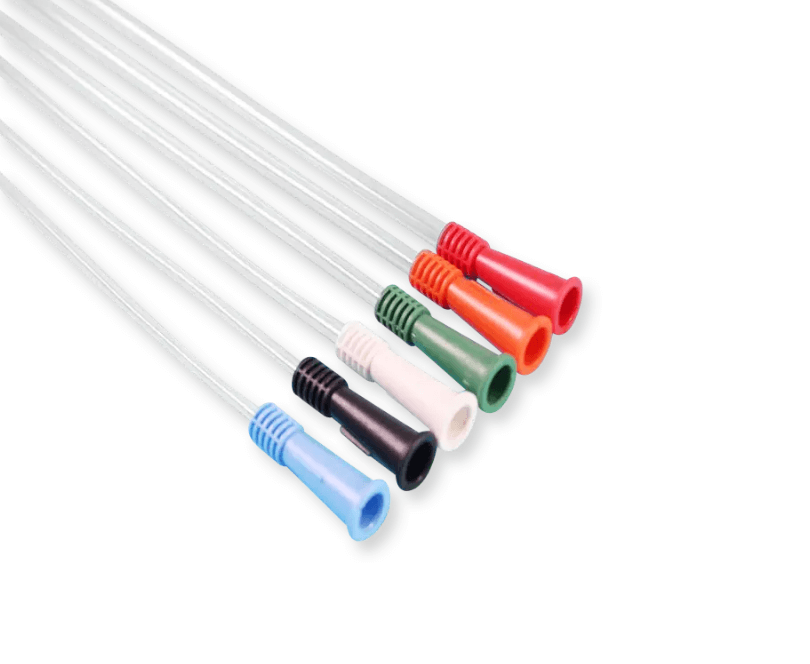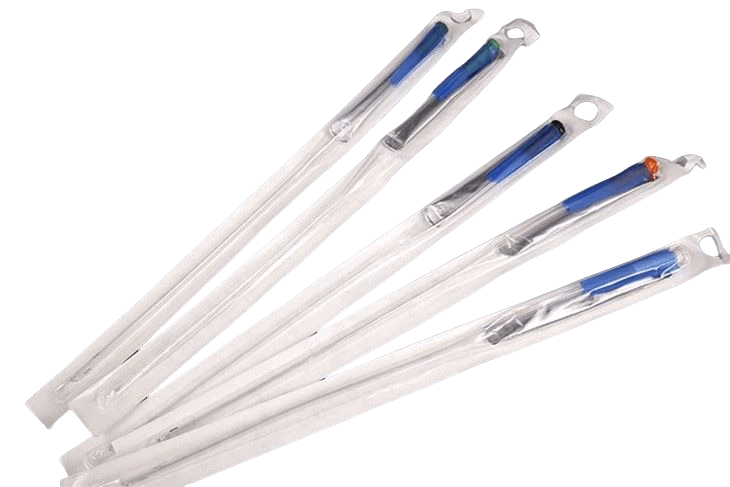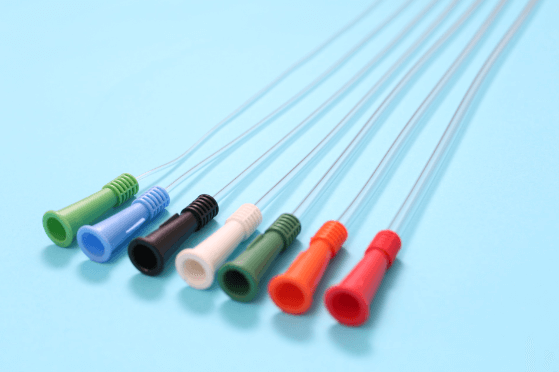Finding the right supplier for medical products can be a lot more challenging than sourcing other items — especially when it comes to intermittent catheters that directly affect patient safety. If you’re feeling overwhelmed trying to find a trusted source for quality catheter supplies in the U.S., you’re not alone. This article will walk you through what to look for and help you feel more confident managing urinary health or post-surgery care. 1. Product Quality and Certification Safe Materials Matter Reliable catheter suppliers must offer products made from biocompatible, medically safe materials. Look for: Medical-grade PVC and silicone Hydrophilic or antimicrobial coatings Latex-free options for allergic users These materials reduce urethral trauma and infection risks, especially important in emergency and long-term use. Certification Is Non-Negotiable Ensure the supplier complies with global standards: FDA clearance (for U.S. use) CE marking (for Europe) MDR compliance (Medical Device Regulation in the EU) ISO 13485 certification for quality management systems These certifications prove the supplier follows strict testing and documentation procedures. Without them, product reliability is questionable. 2. Supply Chain Stability In war zones, natural disasters, or pandemics, catheter shortages can become life-threatening. Choose suppliers who: Operate stable, high-capacity production lines Have contingency plans for raw material shortages Offer regional warehouses or fast-shipping options in the U.S. Suppliers who stock locally can reduce delivery lead time and prevent stockouts. Local Warehousing Reduces Risk If a supplier has inventory stored near your facility or customer base, it ensures faster fulfillment. For emergency and field operations, this is critical. 3. Cost and Value Bulk Discounts and Long-Term Contracts For hospitals, field operations, and veteran programs, buying in bulk lowers unit cost. Trusted suppliers offer: Volume-based discounts Fixed-rate annual contracts Support for group purchasing This not only saves money but ensures price stability over time. Look Beyond Unit Price Some intermittent catheter kits include pre-lubricated tubes, sterile gloves, antiseptic wipes, and packaging for safe disposal. While they may cost more upfront, these kits reduce time, risk, and waste in clinical settings. 4. Innovation and Customization Advanced Features in 2025 Modern intermittent catheters now include: Antibacterial or antifungal coatings Smart catheter tracking (with connected mobile apps) Compact, pre-lubricated packaging for one-handed use Pediatric-sized and anatomically adaptive designs These features improve outcomes, especially for patients with complex needs. Custom-Fit Options for Special Cases Leading suppliers offer catheter kits tailored for: Pediatric patients Users with neurogenic bladder conditions Female anatomy-specific models Field medics needing fast-deploy kits OEM capabilities also let you add branding, packaging, or custom designs based on your market's requirements. 5. Service and Support Fast Customer Service A quality catheter supplier should have: Clear product replacement policies 24–48 hour turnaround on damaged or missing orders Easy communication by phone or email For field use or large-scale procurement, fast responses prevent operational delays. Clinical Support Adds Value Top suppliers also offer: Operation guides and manuals Virtual or on-site training for medical staff Patient education tools This kind of support reduces misuse and improves patient safety across all settings. Buying for Different Scenarios For Hospitals Choose suppliers with: Complete certifications Strong manufacturing scale Flexible B2B procurement options These suppliers meet the high-volume, regulated needs of U.S. medical facilities. For Home Users Prioritize: Easy-to-use pre-lubricated catheters Subscription ordering via e-commerce Discreet and hygienic packaging Convenience and comfort are key for independent living. For Emerging Markets (e.g., Southeast Asia, Middle East) Look for: Language localization in packaging Cost-efficient shipping Adaptability to varying power, hygiene, or training levels Local adaptation is crucial for user safety and satisfaction. Red Flags and Risk Avoidance Watch out for: No clinical data or expired certifications Vague return or refund policies MOQ (minimum order quantity) that doesn’t match your needs Key Contract Points to Negotiate MOQ flexibility Product replacement clauses Delivery time guarantees Regulatory documentation requirements These prevent future disputes and improve accountability. Conclusion As the intermittent catheter market evolves, reliable supplier choices can ensure product availability, safety, and efficiency. Whether you're sourcing for a hospital, an army field unit, or a civilian home care program, keep these five factors in mind for long-term success. If you need an experienced OEM partner for intermittent catheter suppliers, you can consider Bever Medical. We offer flexible solutions tailored to your needs.
View More +-
12 May 2025
You'll notice that your body goes through a lot of changes during pregnancy—especially as your baby grows. During pregnancy, you might face some challenges like morning sickness, stretch marks, and back pain. And some women may experience bladder leaks or even urinary incontinence due to the pressure on the bladder. In this article, we'll talk about how to manage bladder leaks during pregnancy and after childbirth. What Causes Pregnancy-Related Incontinence? Hormonal Shifts Hormones like relaxin and progesterone loosen pelvic floor muscles during pregnancy. While this helps prepare the body for childbirth, it also increases the risk of urine leakage. Bladder Pressure As your baby grows, your uterus puts pressure on the bladder, reducing its holding capacity and making urgency and frequency more common. Muscle Weakness Pregnancy and vaginal delivery can weaken the pelvic floor. Weakened muscles can no longer support the bladder and urethra properly, causing stress incontinence. When Does Incontinence Begin? For many women, leakage starts in the second or third trimester. However, some may notice symptoms as early as the first trimester due to hormonal changes. Postpartum incontinence may persist for weeks or months, especially after a vaginal delivery. Risk Factors for Incontinence Multiple pregnancies Vaginal deliveries with forceps or prolonged labor High BMI before pregnancy Smoking or chronic coughing Carrying twins or a large baby A family history of urinary incontinence Being aware of these risk factors can help you take early preventative steps. How to Prevent or Manage Incontinence Strengthen Pelvic Floor Muscles Kegel exercises are essential. Contract your pelvic muscles for 5 seconds, then relax. Repeat 10–15 times, three times daily. Consistent practice before and after birth can reduce leakage and strengthen bladder control. Train Your Bladder Bladder training increases the interval between bathroom trips. Start by extending your time by 10 minutes and gradually increase. This method is especially effective for urge incontinence. Use Hydrophilic Catheters For individuals requiring temporary bladder drainage, hydrophilic catheters provide a comfortable, low-friction solution. These catheters are pre-lubricated, reducing urethral irritation and increasing safety during use. Dietary and Lifestyle Adjustments Maintain a Healthy Weight Extra body weight adds pressure to the bladder. Returning to your pre-pregnancy weight can relieve some stress on your pelvic floor. Limit Irritants Avoid bladder irritants like caffeine, alcohol, and spicy foods. Also, drink plenty of water and eat high-fiber foods to prevent constipation, which can worsen urinary leakage. Quit Smoking Smoking causes chronic coughing and bladder irritation, both of which can lead to or worsen incontinence. Postpartum Recovery Tips Be Patient and Consistent Recovery takes time. Continue pelvic exercises and monitor your bladder habits. Speak with your doctor if symptoms persist after 6–8 weeks. Consider Medical Devices In some cases, a pessary—a removable vaginal support device—can help. Your doctor may also recommend an intermittent catheter kit if you’re unable to fully empty your bladder post-delivery. Seek Professional Help Pelvic floor therapists, urologists, or OB/GYNs can offer support. In some situations, minimally invasive surgical options may be discussed. Choosing the Right Products When selecting incontinence products, choose reliable, medical-grade supplies. For temporary self-catheterization needs, an intermittent catheter is a discreet and hygienic option. Working with an experienced catheter supplier ensures quality, consistency, and proper support. If you’re in a military, emergency response, or clinical setting, OEM catheter kits provide flexibility for various environments. When to See a Doctor Seek help if: You experience pain during urination Leaks worsen or disrupt your daily life Symptoms persist more than 8 weeks after birth You have a history of pelvic floor issues or surgeries Prompt intervention can prevent long-term complications. Final Thoughts Urinary incontinence is common, but treatable. With the right exercises, bladder training, and medical support, most women regain full control. For clinicians and aid organizations, having the right tools—like intermittent catheter kits and hydrophilic catheters—can support maternal health in both civilian and military care settings. As a trusted catheter supplier, Bever Medical offers high-quality intermittent catheter solutions tailored for OB care, field hospitals, and urgent relief programs. Any interests, please feel free to contact us today.
View More + -
05 May 2025
For individuals who experience urinary retention, neurogenic bladder, or certain urological conditions, intermittent catheterization offers a reliable way to empty the bladder safely and efficiently. Unlike indwelling catheters, intermittent catheters are inserted only when needed and removed after use. This approach reduces the risk of infection and gives patients greater mobility and independence. However, selecting the right intermittent catheter is crucial for comfort, safety, and long-term success. Why the Right Catheter Matters? Using an ill-fitting or inappropriate catheter can lead to complications such as urethral trauma, bladder spasms, infection, and discomfort. The right catheter will allow smooth insertion and drainage, minimize irritation, and fit the user's anatomy and lifestyle. Below are key factors to consider when choosing the right intermittent catheter: 1. Catheter Coating: Coated vs. Uncoated Intermittent catheters are available in two main types: coated and uncoated. Uncoated Catheters require the user to apply a water-soluble lubricant or anesthetic gel before insertion. These are often more economical but require more preparation and handling. Coated Catheters (such as hydrophilic-coated catheters) come pre-lubricated or with a gel/saline packet for activation. They offer a smoother insertion experience, reduce friction, and lower the risk of urethral injury. They are especially beneficial for users with sensitive skin or frequent catheterization needs. 2. Catheter Tip: Straight vs. Coude Catheters are designed with different tip styles to accommodate anatomical and clinical differences. Straight Tip catheters are the most common and suitable for most women, and children. They are ideal when there are no obstructions in the urethra. Coude Tip (curved tip) catheters are designed to navigate around obstructions such as enlarged prostates or urethral strictures. They are often recommended for men who have difficulty with straight-tip catheters. 3. Length of the Catheter The correct catheter length ensures complete bladder emptying without excessive tubing. Pediatric Length: 6–12 inches; designed for children's shorter urethras. Female Length: 6–8 inches; shorter, more discreet, and suitable for women. Male Length: 16 inches; accommodates the longer male urethra. Using the wrong length can lead to handling difficulties or incomplete bladder drainage. 4. Catheter Size (Diameter) Catheter diameter is measured in French units (Fr). Choosing the correct size is important for comfort and flow rate. Smaller diameters (e.g., 8–10 Fr) are easier to insert but may drain urine more slowly. Larger diameters (e.g., 14–16 Fr) allow faster drainage but can cause irritation if too large for the urethra. Your healthcare provider can help you find the ideal size based on your anatomy and condition. 5. Catheter End Type: Funnel vs. Luer Funnel End catheters have a color-coded hub that corresponds to their French size. This end allows users to connect the catheter to a urine collection bag or easily grip the device without contaminating the tube. 6. Material Options Different materials suit different needs and sensitivities: PVC (Vinyl): Transparent and smooth, vinyl catheters are firm yet slightly flexible. They are often preferred for short-term or occasional use. Red Rubber (Latex): Soft and pliable, these catheters warm quickly to body temperature but are not suitable for people with latex allergies. Silicone: Flexible and hypoallergenic, silicone catheters are a great option for long-term use and latex-sensitive individuals. 7. Lifestyle Considerations Mobility: Active individuals may prefer compact, pre-lubricated options that are easy to carry and use discreetly. Dexterity: Users with limited hand mobility may benefit from touch-free catheter systems or those with ergonomic packaging. Frequency of Use: Those who catheterize multiple times per day may need more comfort-oriented or lower-friction options to protect their urethral lining. Conclusion Choosing the right intermittent catheter is not one-size-fits-all—it's a personal decision that depends on your anatomy, medical needs, and daily routine. Always consult a healthcare professional for guidance before starting or changing your catheter regimen. With the proper catheter, intermittent catheterization can become a safe, comfortable, and empowering part of your daily life. About BEVER Medical Intermittent Catheters BEVER Medical Intermittent Catheters are designed to meet the high standards of clinical performance and patient comfort. Manufactured with premium medical-grade materials, these catheters feature polished eyelets for smooth insertion and optimal drainage. Available in multiple sizes, lengths, and tip options, they are ideal for hospitals, clinics, and distributors seeking reliable, cost-effective solutions for intermittent catheterization. Suitable for both new and long-term users, BEVER catheters ensure consistency, safety, and satisfaction in every use.
View More + -
21 Apr 2025
When urinary retention is diagnosed, your doctor will recommend an intermittent catheter. This ensures that the patient can lead a normal life. However, an ill-fitting catheter can make the patient feel uncomfortable and even increase the risk of infection. This article is a buyer's guide to intermittent catheters, including things to consider when choosing an OEM catheter supplier and using tips. What Is an Intermittent Catheter? An intermittent catheter is a thin, flexible tube inserted into the bladder to drain urine and then removed immediately after use. Unlike Foley catheters, they are not left in the body. Intermittent catheterization is typically done several times per day and is suitable for short-term or regular bladder management. Intermittent catheters are commonly used for: Patients with a neurogenic bladder Spinal cord injury victims Post-surgical bladder retentionCombat or trauma-related urinary complications These catheters are often paired with lubricating jelly for catheters to ease insertion and reduce the risk of trauma. Why Choose Intermittent Catheters for Emergency and Military Settings? Intermittent catheters are ideal for field responders, combat medics, and mobile clinics due to: Compact Design: Easy to carry and store in first-aid kits Single-Use: Reduces contamination risk in non-sterile environments Quick Application: Requires no retention balloon, reducing training time Lower UTI Risk: Compared to long-term indwelling options Bever Medical provides customized catheter solutions under OEM agreements, tailored for high-demand environments. Types of Intermittent Catheters Choosing the correct intermittent catheter involves more than size. Key factors include material, tip shape, and lubrication. Tip Design Straight Tip: Most common, used for general catheterization Coudé Tip: Curved for easier insertion in patients with enlarged prostates or urethral obstructions Lubrication Options Uncoated Catheters: Require manual application of lubricating jelly for catheters Pre-Lubricated Catheters: Coated for convenience and sterility in field operations Material Composition PVC (Polyvinyl Chloride): Economical and firm for easier insertion Silicone: Softer and biocompatible for patients with sensitivities Hydrophilic Coatings: Reduce friction, making catheterization smoother and more comfortable Key Considerations for OEM Buyers If you’re sourcing hospitals, disaster response teams, or defense contracts, consider these factors: 1. Sterility and Packaging Look for individually wrapped, sterile catheters. Closed-system packaging is ideal for non-clinical environments. 2. Size and Length Variety Adult male, female, and pediatric sizes should be available. Defense and field kits often require standard 16Fr or 14Fr sizes. 3. Regulatory Compliance Ensure your catheter supplier complies with FDA, CE, and ISO certifications for medical devices. 4. Private Label Capability If you're distributing or reselling, ensure your OEM partner can provide custom branding, packaging, and documentation. Benefits of Partnering with an OEM Catheter Supplier Choosing an experienced catheter supplier like Bever Medical means: Custom development of continence care products Reliable bulk manufacturing Sterile, compliant, and field-tested catheter models Scalable production for large-volume orders On-time delivery to global markets, including military zones When to Use an Intermittent Catheter Surgical Recovery: Short-term use after abdominal or urological surgery Combat Injuries: In cases of spinal trauma or urinary obstruction Chronic Conditions: Neurogenic bladder, spina bifida, or multiple sclerosis Emergency Evacuations: Quick and sterile bladder management under pressure Tips for Proper Use and Infection Prevention Whether used in a hospital or combat zone, follow these steps to reduce the risk of catheter-associated urinary tract infections (CAUTIs): Always wash hands before and after use Use sterile gloves in high-risk settings Apply lubricating jelly for catheters to minimize trauma Never reuse single-use intermittent catheters Dispose of used supplies in biohazard containers For field teams, training on sterile techniques and emergency bladder management should be part of standard protocol. Final Thoughts Choosing the right intermittent catheter isn't just about convenience—it's about patient comfort, infection control, and operational efficiency. For OEM buyers, working with a reliable catheter supplier ensures product quality and delivery performance. Need an OEM intermittent catheter solution that meets the highest medical standards? Contact Bever Medical today—your trusted source for private label and bulk catheter manufacturing.
View More + -
09 Apr 2025
For people who need to use a catheter, traveling long distances can be very challenging for them. Out of your familiar surroundings, whether in a private car or public transport, bathrooms may be limited, uncomfortable, or unhygienic. Many patients experience anxiety and discomfort when dealing with catheterization needs during long journeys. In this article, we share three practical tips to make catheterizations more efficient, hygienic, and easier on long journeys. Common Challenges Faced During Travel Long-distance travel presents a unique set of challenges for intermittent catheter users: Limited space In private vehicles, stopping options are limited to rest areas or service stations. In public transportation, using onboard restrooms (if available) can be cramped and unsanitary. Hygiene concerns Access to clean facilities for handwashing and catheter insertion may be limited, increasing the risk of infection. Time pressure Tight travel schedules can make it difficult to find suitable times or locations for catheterization, especially in crowded or unfamiliar environments. Knowing these challenges is the first step to being better prepared. Scroll down and find how the right tools can help address these concerns. Tip 1: Use a Hydrophilic Coated Catheter for Easier Insertion When it comes to intermittent catheterization on the go, hydrophilic coated catheters are one of the most travel-friendly choices accessible. These catheters are pre-lubricated or end up elusive when activated with water, allowing for smoother and more comfortable insertion. Why are hydrophilic-coated catheters ideal for travel? Less preparation time: No need to carry separate lubricants or clean water. Lower risk of infection: Hydrophilic surfaces reduce friction and irritation, minimizing urethral trauma. More discretion: Their compact, ready-to-use design makes them easier to use in small, private spaces. Who benefits the most? The hydrophilic coated catheter is suitable for both new and experienced users, and they are especially helpful for: Travelers with limited mobility Individuals who self-catheterize in public or semi-public restrooms Patients prone to irritation or infections from traditional catheters Tip 2: Carry Disposable, Pre-Packaged Catheter Kits Disposable catheter kits that include gloves, clean wipes, a collection bag, and the catheter itself can save time and reduce contamination risks. These convenient kits are especially valuable amid long drives or flights where getting to a sterile environment is limited. Keep several of these in your carry-on, glove compartment, or travel bag so you always have a backup ready. Tip 3: Pack a Privacy Cover or Shield Using a security cover or protective accessory can make the catheterization process feel less upsetting when protection is limited. Whether you're inside a vehicle, using a shared washroom, or essentially got to piece perceivability, having a compact privacy obstruction gives peace of mind. Items like reusable fabric screens or wearable casting garments can be lightweight, foldable, and easy to set up when needed. Where to Buy Hydrophilic Coated Catheters? While some local medical suppliers carry hydrophilic coated catheters, the finest choice is to consult a healthcare provider for a proper prescription and personalized suggestion. Once you've got a prescription, you can buy from a trusted catheter supplier online. Bever Medical is a catheter supplier with years of experience in medical-grade intermittent catheters, including hydrophilic-coated options. Our products are designed with user comfort and safety in mind and are available in different sizes and styles suitable for children, grown-ups, and the elderly. Final Thoughts Long-distance travel doesn't need to cruel distress or stress for intermittent catheter users. By choosing the right continence care products—like hydrophilic coated catheters—you can make your travel smoother and more secure. If you are searching for reliable, travel-ready catheter products, you can get them at Bever Medical. We offer a wide range of intermittent catheters suitable for all age groups. As a trusted catheter supplier, we ensure high-quality hydrophilic coated catheters for comfort and convenience. Any interests, welcome to contact us.
View More + -
01 Apr 2025
Urinary incontinence is a common health problem for humans that seriously affects people's lives and work, so many people are reluctant to discuss it. For women, sometimes they face menstruation, which can bother them. Therefore, managing urinary incontinence is important. However, it may be a big challenge for novices. Luckily, it will be simple here. This article provides some care guidelines for women with urinary incontinence. Check it out now. Use urinary continence care products Urinary continence care products are designed to help women effectively manage urinary incontinence in their daily lives. These items include catheters, absorbent pads, liners, and specially designed underwear that can quickly absorb leaked urine, keep the skin dry, and avoid disturbance and contamination. Catheter Supplies For female patients who cannot totally purge their bladders, health specialists will suggest the use of female catheters according to the patient's physical condition. These catheters are appropriate for the female body structure and allow self-intermittent catheterization to help purge the bladder and avoid urinary tract infections and other complications. When choosing, the doctor will help select the correct size and length and usually recommends the use of disposable catheters. It makes a difference to encourage substitution amid daily life and travel. Absorbent pads Absorbent pads are large-area protective products that are often used on beds or chairs to prevent urine from leaking onto furniture. They are highly absorbent and often come with a waterproof backing to ensure that liquids do not penetrate the surface underneath. Patients can purchase them in the amount of absorbency they need. Liners Pads are a lighter incontinence care product for women with mild to moderate incontinence. Similar in shape to feminine hygiene pads, but with a higher absorbency, they quickly absorb urine and lock in moisture, reducing odor and keeping the skin dry. Patients can choose the appropriate absorbency level based on their daytime and nighttime needs. Specially designed undergarments Specially designed incontinence undergarments look like regular underwear but have built-in absorbent layers and waterproof barriers to effectively absorb urine while remaining breathable and comfortable. Specially designed undergarments are better suited to women who want to maintain privacy and a normal lifestyle than traditional liners and absorbent pads. Dietary help for female incontinence Avoid bladder irritants by including non-acidic fruits, fiber-rich foods, and hydrating vegetables in your diet. Eating certain foods can improve bladder health, while other foods may worsen symptoms. Fiber-rich fruits such as bananas, blueberries, pears, and watermelon can prevent constipation and relieve pressure on the bladder. However, oranges are high in acidity, which can irritate the bladder. Vegetables such as asparagus, carrots, lettuce, and bell peppers are rich in vitamins and minerals that benefit overall health. Other important dietary tips: Increase your fiber intake: High-fiber foods can help prevent constipation, which can indirectly reduce the occurrence of urinary incontinence. Stay hydrated: Drink 6 to 8 glasses of water a day and avoid overactive bladders. Limit caffeine and alcohol: These drinks may irritate the bladder and increase urination frequency and urgency. Exercises to Help Women with Urinary Incontinence Performing specific exercises regularly can strengthen the pelvic floor muscles and improve urinary incontinence symptoms. Kegel exercises are the most commonly recommended and help strengthen the muscles that control urination. Kegel Exercise Guide: 1. Identify the pelvic floor muscles: Try to stop mid-urination to find the correct muscle group. 2. Practice contractions: Tighten your pelvic floor muscles, hold for 2 seconds, then relax. 3. Repeat: Perform 3 sets of 10 contractions daily, gradually increasing the hold time to 10 seconds. Exercise Tips: Avoid high-impact activities: These activities you shouldn't do, such as running and jumping, which may increase abdominal pressure and worsen incontinence. Consider Pilates or yoga: Do low-impact exercises to help strengthen the core and pelvic floor muscles. Comprehensive Management and Professional Support In addition to the above ways, lifestyle adjustments and looking for professional assistance are equally important. Regular urination, avoiding weightlifting, stopping smoking, controlling weight, and promptly treating obstruction can all help improve urinary incontinence symptoms. If self-management is ineffectual, it is suggested to consult a healthcare proficient to explore other treatment options, such as medication or surgery. Conclusion Master the above strategies to manage female urinary incontinence to enhance the quality of daily life. Urinary incontinence can be securely and viably controlled by combining the utilization of suitable continence care products, dietary adjustments, regular exercise, and way-of-life changes. For more professional catheter supplies, it would be ideal if you view the BEVER Medical website.
View More +







